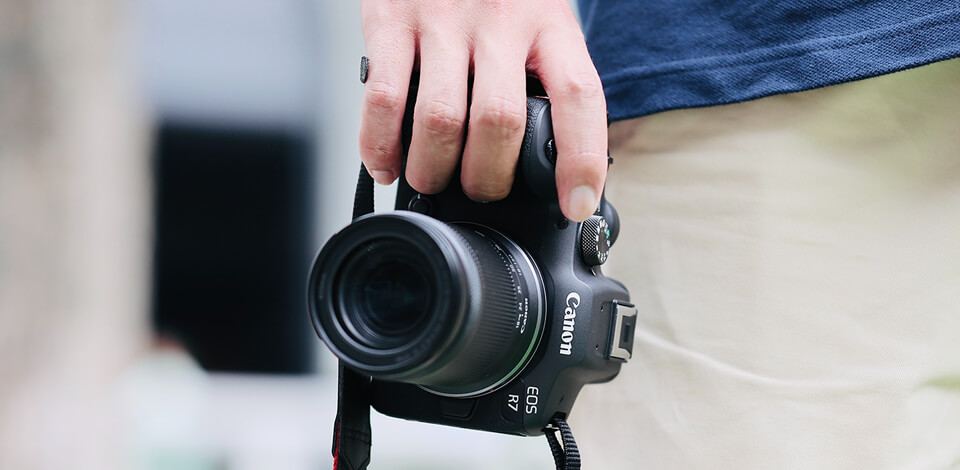
Canon cameras provide a fast frame rate and reliable in-body image stabilization, ensuring that you capture those fast-paced moments with precision. With their large APS-C sized sensor, you can achieve a shallow depth of field and even cinematic quality video, elevating your work to new heights.
And let's not forget about the Eye AF feature, high-speed shooting, and the incredible 8K video capability that Canon DSLRs and mirrorless models offer.
In my list of the Canon cameras comparison, there are entry-level models which are affordable and packed with features that are easy to use. They're also compact and lightweight, making them convenient to carry anywhere you go.
One fantastic feature for beginners is the automatic mode, where the camera takes a series of shots at varying settings and saves the best one. This takes away the worry of adjusting settings and allows you to focus on exploring the camera's capabilities. Canon even provides a built-in grid display, making it easier to apply the rule of thirds for more aesthetically pleasing compositions.
I also compared Canon EOS R50 with its Nikon competitor (and a Sony cam in passing), the results of which has showed that Canon cameras are a top choice for many professional photographers due to their high-quality imaging, ergonomic design, and extensive lens selection.

Type: DSLR | Sensor: 24.2 Megapixel CMOS (APS-C) | Autofocus: Dual Pixel CMOS AF | Screen Type: 3.0'' 1.62m-dot vari-angle touchscreen | Continuous shooting speed: 15fps
One of the standout features of Canon EOS R50 is its fully automatic shooting modes and intelligent subject-detection functions. Canon cameras are known for their natural-feeling colors, and the R50 certainly lives up to that reputation. It strikes a good balance between control and ease of use. Another advantage is the built-in Wi-Fi connectivity, allowing you to easily connect the camera to your smartphone for remote control and image transfer.
Taken with Canon EOS R50
It can be called a good camera for beginners and those who primarily shoot JPEGs for social media or quick print/share purposes. This best Canon camera also comes with helpful help screens that guide you through its settings and capabilities, making it user-friendly for beginners. Additionally, it offers a wide range of scenes and creative settings to suit various subjects.

Type: DSLR | Sensor: 20.2 megapixel CMOS sensor | Autofocus: 11-point AF system | Screen Type: | Continuous shooting speed: 6.5fps
People professionally engaged in studio photography, as well as those fond of taking landscape and cityscape shots, will definitely appreciate the capabilities of this best Canon DSLR.
With a shallow depth of field and a full-frame 26MP sensor, the 6D can become your reliable partner not only during daytime adventures but also while taking images in the dark. Your photos will have clear details and rich colors.

Taken with Canon EOS 6D
There is an adjustable, rotary screen, so you can instantly adapt to your current shooting conditions. Besides, you can rely on this Canon DSLR camera if you are going to add a creative element to your photo session and need to capture dynamic objects, fleeting facial expressions, etc. The camera allows taking shots at 6.5fps.

Type: Mirrorless | Sensor: 24.2 MP | Autofocus: | Screen Type: | Continuous shooting speed:
If you don’t pay attention to its slightly outdated sensor, the EOS R10 released by Canon will be one of the best mirrorless cameras for novice photographers. Featuring Canon’s Digic X chip, it has impressive AF capabilities and supports top-level subject tracking.

Taken with Canon EOS R10
Fitted with dual control dials and a special AF joystick, this Canon camera allows you to bring your creative ideas to life by experimenting with a range of settings. It doesn’t weigh much, which makes it perfect for anyone who has ever used DSLRs.
This Canon for video comes with articulating touchscreen display. If you used only smartphones for taking photos before, you will be pleased with this model.

Type: DSLR | Sensor: 30.4 MP | Autofocus: | Screen Type: | Continuous shooting speed:
If you are hesitating which Canon DSLR to buy for an accurate color rendering, Canon 5D Mark IV can be deservedly called a great Canon camera for portraits. It shows the most striking results with close-ups, capturing the slightest facial details.
The ISO ranges from 100 to 32000, so you can take this camera with you for shooting at night. The AF has also been upgraded for a better photographing experience.
Taken with Canon EOS 5D Mark IV
With so many cool features on board, the 5D Mark IV can easily compete with other cameras for photography. Focusing is carried out through a viewfinder or on an image sensor, so choose what works best for you.
All in all, this full-frame body will become a justified investment for event, subject, landscape, and portrait photographers.

Type: Mirrorless | Sensor: 32.5 MP | Autofocus: | Screen Type: | Continuous shooting speed:
The Canon EOS R7 is a smart choice for those who are looking for a model with an APS-C image sensor, impressive speed, reliable AF, and high resolution. This camera is suitable for shooting photos and videos of wildlife as well as for people who want to improve their photography skills.

Taken with Canon EOS R7
What makes this camera different from the rest is that it has an excellent shooting speed of 15 frames per second when you use it in a mechanical mode. It allows it to beat other models of this camera brand. You can shoot at 30 fps using an electronic shutter. It enables it to deliver similar performance to the other best Canon cameras.

Type: Mirrorless | Sensor: 24.2 MP | Autofocus: | Screen Type: | Continuous shooting speed:
One of the standout features of the EOS R8 is its Dual Pixel CMOS AF II system, which is claimed to be the fastest in the world for both stills and video. This is a game-changer for those who are into sports and wildlife photography, as well as solo bloggers.
The autofocus capabilities are truly impressive, able to track subjects even when they're moving around the frame. This Canon camera also has subject recognition features that automatically focus on things like human heads, animals, and vehicles.
Taken with Canon EOS R8
Unlike many cheap Canon cameras, the EOS R8 offers the ability to record RAW footage with various compression options, giving you more control in post-production. It also allows for recording in the LOG format, providing a high dynamic range that is great for color grading.

Type: Mirrorless | Sensor: 26.2 MP | Autofocus: | Screen Type: | Continuous shooting speed:
The EOS RP is the second full-frame camera model released by Canon. It stands out for its compact size and budget price, which makes it a better option than other similar mirrorless cameras. It was created for those who want to start shooting using a full-frame mirrorless camera released by a well-known brand.
Due to its small size, it might seem poorly balanced when you connect it to a large lens. Besides, when shooting 4K video, you will notice that your frame will be cropped because of a 1.6 crop factor. In addition, you will be able to use the ultra-fast Dual Pixel CMOS AF only when you shoot at Full HD resolution.

Taken with Canon EOS RP
The key selling point of this best Canon camera for photography is that it enables you to capture crystal-clear images. It has a tilting touchscreen display, which makes it perfect for taking photos and shooting videos. Thanks to the EF lens adaptor, you can alternate between Canon DSLR and RF lenses.

Type: Mirrorless | Sensor: Full Frame (35mm) | Autofocus: Dual Pixel CMOS AF | Screen Type: 3.69m-dot EVF and 3in, 1.62m-dot LCD | Continuous shooting speed: Up to 40 fps at 20MP
EOS R6 Mark II is among the Canon camera comparison list due to its 5-axis in-body image stabilization. This allows for up to eight stops of shake correction, making handheld shooting in challenging conditions possible. This is a real game-changer for photographers who prefer shooting without a tripod, especially when it comes to capturing video footage.
Taken with Canon EOS R6 Mark II
Another major advantage is the camera's 24 MP sensor, which delivers impressively detailed images with sharpness and vibrant colors. Additionally, this Canon camera offers a wide range of image quality settings, allowing you to customize your results according to your preferences. This flexibility is particularly useful when shooting in RAW format, as it gives you full control over your images.

Type: DSLR | Sensor: 32.5 MP | Autofocus: | Screen Type: | Continuous shooting speed: 10fps
Another example of the best Canon DSLR to buy is Canon 90D which comes with a comfortable grip and easy-to-use features. One standout feature is the full-frame 4K video recording capability, which is a huge plus. Plus, it has a surprisingly fast frame rate of 10 frames per second, perfect for capturing fast-paced moments.
One of the unique features that sets the Canon 90D apart from its competitors is its articulating LCD screen. This means you can easily shoot in live view mode and adjust the screen to different angles, which adds flexibility to your shooting experience. The screen is also protected by a layer of glass, so you don't have to worry about damage.
Taken with Canon 90D
When it comes to connectivity, this cheapest 4K camera has got you covered. It features built-in Wi-Fi and Bluetooth technology, allowing you to wirelessly transfer images to your smart device. You can also use the accompanying app to remotely control various Canon DSLR functions, which is super convenient.
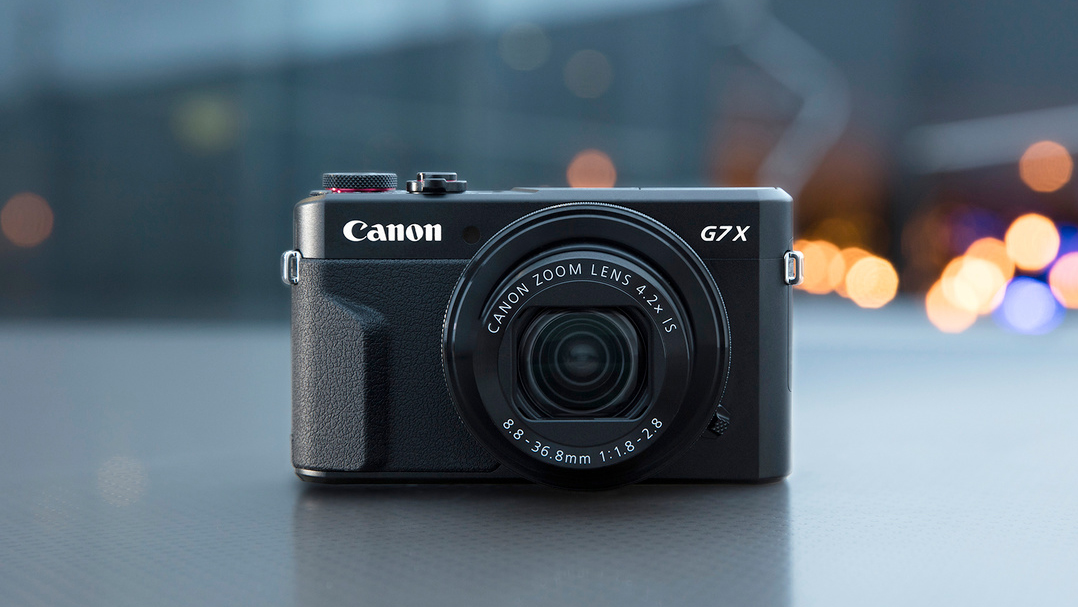
Type: DSLR-like | Sensor: 20.1-megapixel CMOS sensor | Autofocus: | Screen Type: 3-inch color multi-angle touch-screen LCD | Continuous shooting speed: 8fps
Canon PowerShot G7 X Mark II features impressive sensor and high-quality zoom lens. It allows you to capture those precious moments in life with exceptional clarity. The advanced autofocus system is also worth mentioning, as it enables you to take advantage of the camera's remarkable low-light capabilities.
Paired with the optical image stabilizer, this compact camera can produce sharp images in various shooting conditions.

Taken with Canon PowerShot G7 X Mark II
The PowerShot G7 X Mark II is a versatile camera if you are thinking about which Canon DSLR to buy, and it caters to both beginners and experienced photographers. Its compact size and powerful zoom make it perfect for on-the-go shooting, especially while traveling. The camera's ability to shoot full HD video is an added bonus.
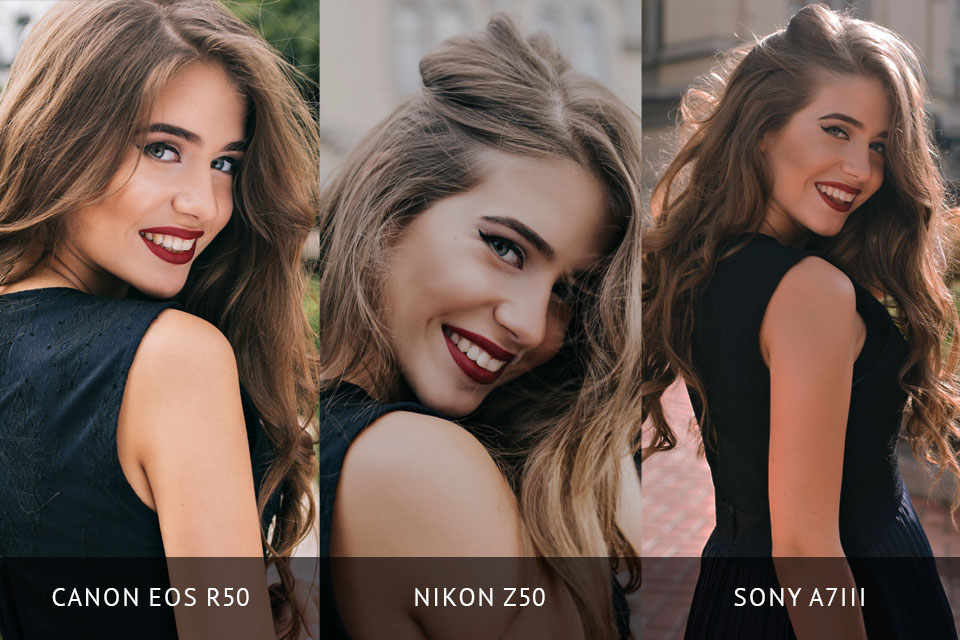
Having had the opportunity to extensively use both Canon EOS R50 and the Nikon Z50, I can confidently assert that the Canon EOS R50 stands out as the superior choice for several compelling reasons.
| FEATURES | CANON EOS R50 | NIKON Z50 |
|---|---|---|
|
Resolution |
24.2MP |
20.9MP |
|
Continuous shooting speed |
12fps |
11fps |
|
Autofocus |
651 points |
209 points |
|
Electronic viewfinder |
2360K dots |
32K dots |
|
Screen |
3.00" fully articulated |
3.20" tilting |
|
Weight |
0.83lbs |
0.99lbs |
|
Price |
$749 |
$1096 |
First and foremost, the Canon EOS R50 boasts a remarkable autofocus system. Its Dual Pixel CMOS AF technology is incredibly fast and accurate, ensuring that I can capture even the most fleeting moments with precision and clarity.
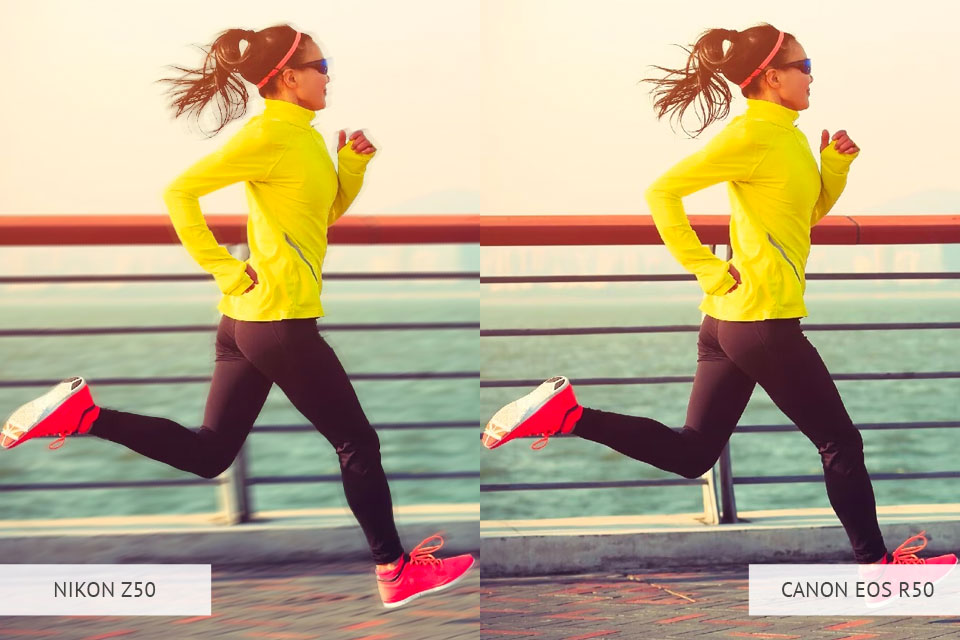
This feature is especially invaluable in situations where quick focusing is essential, such as capturing candid shots or fast-paced events. Nikon's Z50, while commendable, doesn't quite match the speed and consistency of Canon's autofocus system.
Furthermore, the Canon EOS R50 excels in terms of lens compatibility. Canon's extensive range of RF lenses, specifically designed for their mirrorless systems, provides photographers with a wealth of options. The RF lenses offer superb optical quality and innovative features, allowing for creative flexibility and ensuring that I can choose the perfect lens for any situation.
Nikon's Z50, although compatible with their growing Z-mount lenses, still lacks the diversity and maturity of Canon's RF lens lineup.
Additionally, Canon's EOS R50 offers a more intuitive and user-friendly interface. The camera's menu system is well-organized and easy to navigate, making it effortless to customize settings and access various functions on the fly. This streamlined user experience enhances efficiency during shoots, allowing me to focus more on composing my shots and less on navigating complex menus.
While Nikon's Z50 certainly offers a user-friendly interface, Canon's attention to ergonomic design and user experience gives it an edge in terms of usability.
Another notable advantage of the Canon EOS R50 lies in its superior low-light performance. The camera produces remarkably clean and detailed images even in challenging lighting conditions.
This capability is crucial for my work, especially when capturing events or artistic scenes in dimly lit environments. While the Nikon Z50 performs admirably in low light, the EOS R50's sensor and image processing technology deliver consistently impressive results.
When selecting the best Canon camera, you should remember that this is the largest manufacturer, so there are lots of models and you can find excellent options for any purpose. However, it is important to consider and understand several factors to make the right choice.

Image stabilization. An image stabilization system is indispensable if you want to avoid camera shake. The latter can spoil even the most beautiful frame, so you’d better get a device with a stabilization mechanism. This is especially important for photographers who take images without mounting a camera on a monopod by professional tripod brands.
Camera type. The variety of cameras is mind-blowing. You can get DSLRs, camcorders, point-and-shoot cameras, mirrorless devices, and other type of camera.
However, to invest in a camera that will satisfy your needs, you have to define them first. If you specialize in studio or landscape photography, choose full-frame DSLRs. They show amazing results when taking quick shots on the go or organizing long photo sessions.
If you want to shoot films or commercials, you should compare the capabilities of a DSLR and a mirrorless camera to understand how they differ.
Controls - manual. Some photography genres require more elaborate controls, while others allow using the basic minimum. If you want to document things happening around you and don’t bother a lot about details, it is OK to buy a camera with standard controls only.
However, to record pro-level videos, you need to invest in the best Canon camera with more settings and features, including manual focusing, quick access to ISO, shutter speed, etc.

Display – Live View. If you are a beginner, you should favor models that have Live View to use a display as a viewfinder. It is also great if a camera has a tilt screen, as this helps avoid many awkward situations when shooting conditions are far from perfect.
Autofocus. A fast AF system is essential for capturing moving subjects and seizing those decisive moments. Canon cameras with advanced autofocus technology, such as the Dual Pixel CMOS AF, can lock onto your subject quickly and accurately.
Video quality – minimum 1080p. Look for a camera that can record in at least Full HD (1080p) or even 4K resolution. This will ensure that your videos are sharp, detailed, and visually stunning.
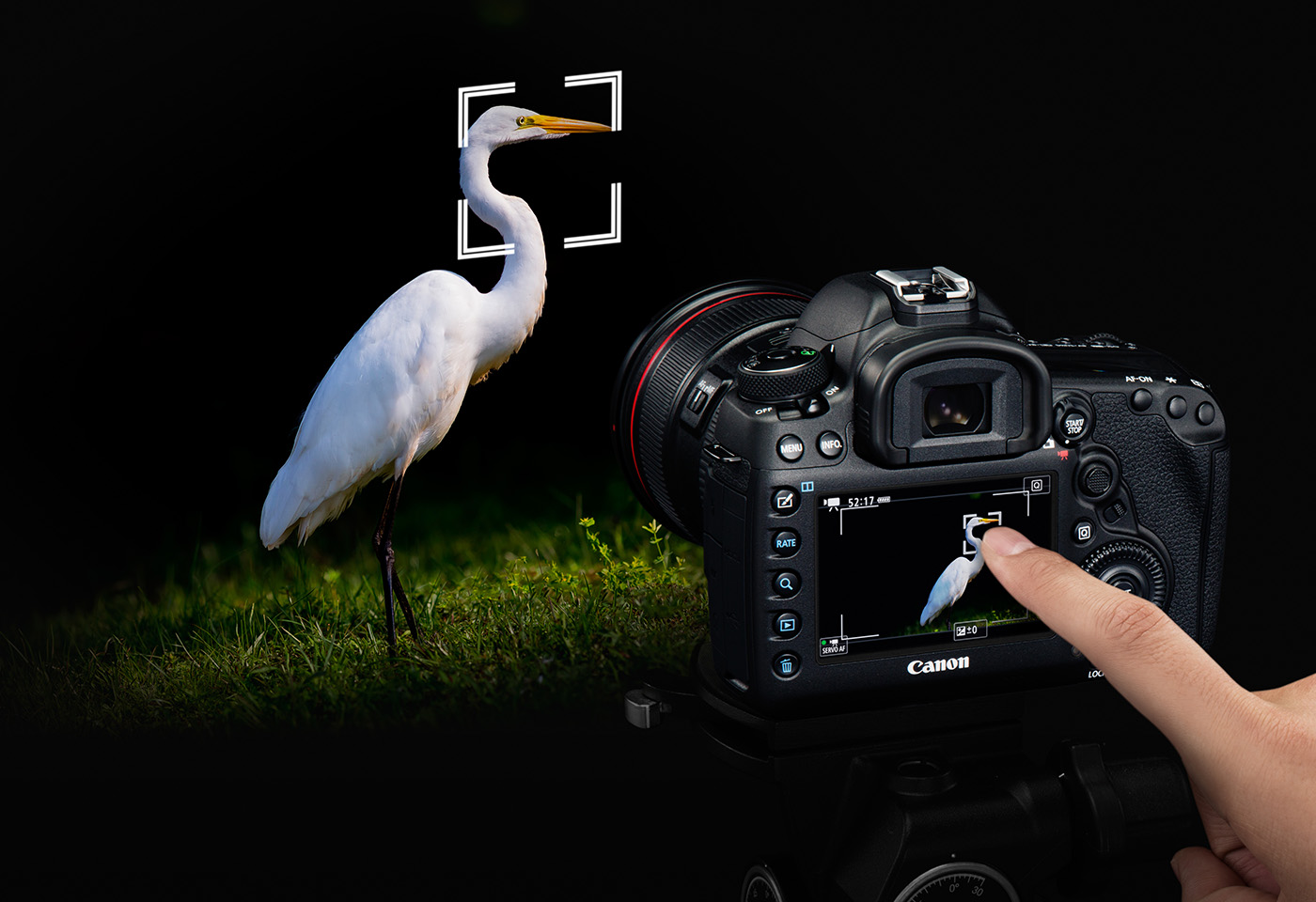
Various shooting modes. These features will allow you to experiment and grow as a photographer. Look for modes like aperture priority, shutter priority, and manual mode, which give you control over your settings and help you understand the fundamentals of photography.